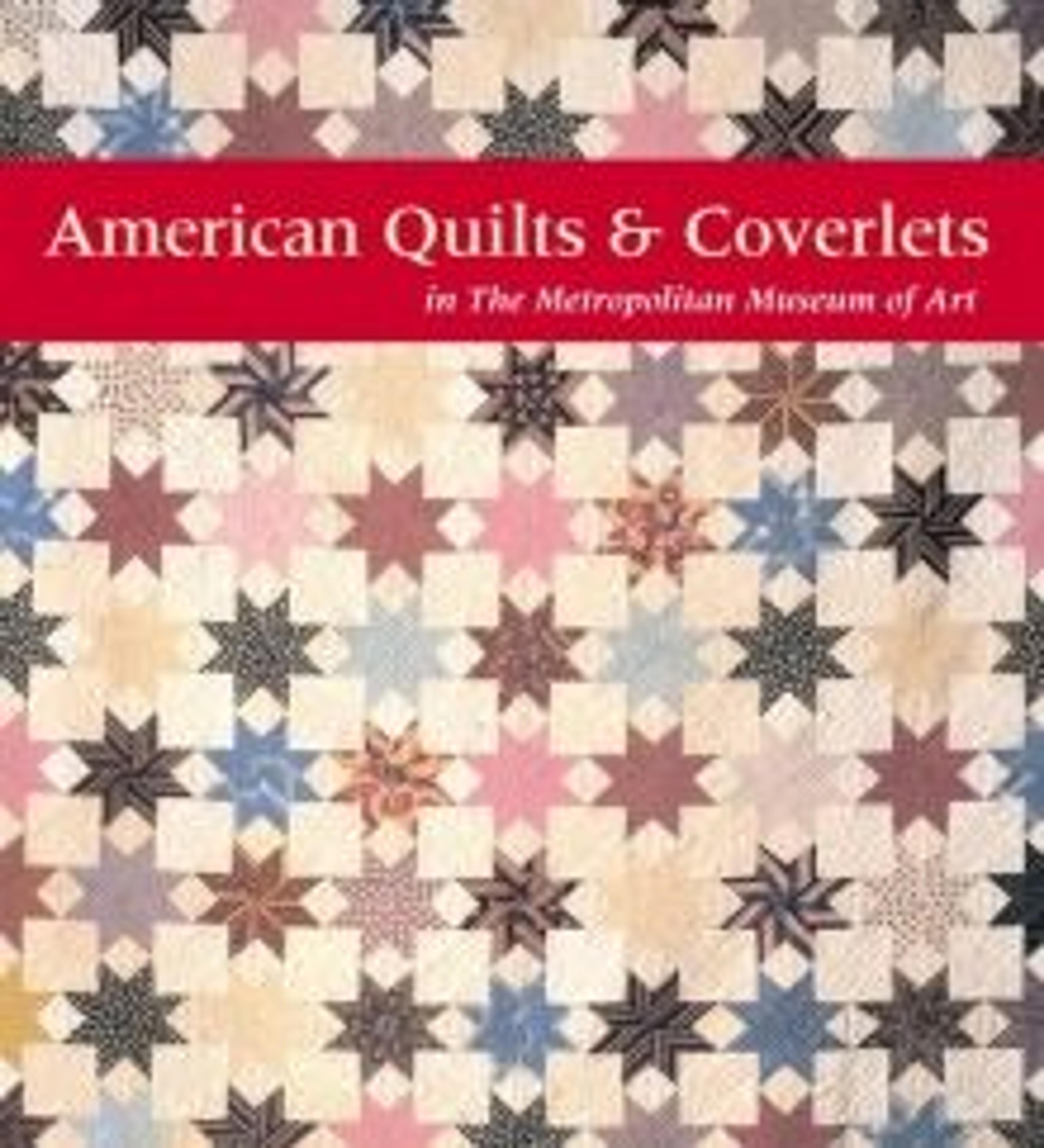Quilt, Contained Crazy pattern
This unusual work is one of the few Crazy quilts known to have been made during the early 1870s. Although some examples of cotton Crazy quilts have been tentatively dated to the 1860s, this quilt is one of the earliest to be firmly documented. There is an inscription in ink on a piece of striped cotton at the quilt's center: "Made by / Mrs. Nancy Doughty / in the / 82and year of her age / for her friend / Miss Lizzie Cole. A. D. 1872". The quilt appears never to have been used; when Miss Lizzie Cole received it in 1872, she must have prized the work of her friend Mrs. Nancy Doughty as highly as we do today, and it is likely that she put it away for safekeeping.
Crazy quilts may have been so named because of the random shapes and sizes of the fabric pieces stitched together to form the quilt blocks. This type of pattern had many sources, including Japanese art, which was highly influential in Europe and America after the opening of Japan to the West in 1854. Throughout the last two decades of the nineteenth century, silk and velvet Crazy quilts (see 1989.66 and 1993.101) were the height of fashion. In comparison, this example, with its color scheme of subtle brown and orange printed cottons, and contained pattern of pieced diamond-shaped blocks within a grid, has a very different appearance. Unlike the silk and velvet quilts, which were often made from kits, the cotton versions were probably pieced exclusively from scraps of fabric accumulated by the quiltmaker. Although a large number of silk Crazy quilts can still be found today, very few of the earlier cotton versions such as this one survive.
Crazy quilts may have been so named because of the random shapes and sizes of the fabric pieces stitched together to form the quilt blocks. This type of pattern had many sources, including Japanese art, which was highly influential in Europe and America after the opening of Japan to the West in 1854. Throughout the last two decades of the nineteenth century, silk and velvet Crazy quilts (see 1989.66 and 1993.101) were the height of fashion. In comparison, this example, with its color scheme of subtle brown and orange printed cottons, and contained pattern of pieced diamond-shaped blocks within a grid, has a very different appearance. Unlike the silk and velvet quilts, which were often made from kits, the cotton versions were probably pieced exclusively from scraps of fabric accumulated by the quiltmaker. Although a large number of silk Crazy quilts can still be found today, very few of the earlier cotton versions such as this one survive.
Artwork Details
- Title:Quilt, Contained Crazy pattern
- Maker:Nancy Doughty (born ca. 1790)
- Date:1872
- Geography:Probably made in Maryland, United States
- Culture:American
- Medium:Cotton
- Dimensions:89 1/2 x 72 in. (227.3 x 182.9 cm)
- Credit Line:Purchase, Mr. and Mrs. Edward J. Scheider Gift, 1989
- Object Number:1989.27
- Curatorial Department: The American Wing
More Artwork
Research Resources
The Met provides unparalleled resources for research and welcomes an international community of students and scholars. The Met's Open Access API is where creators and researchers can connect to the The Met collection. Open Access data and public domain images are available for unrestricted commercial and noncommercial use without permission or fee.
To request images under copyright and other restrictions, please use this Image Request form.
Feedback
We continue to research and examine historical and cultural context for objects in The Met collection. If you have comments or questions about this object record, please contact us using the form below. The Museum looks forward to receiving your comments.
